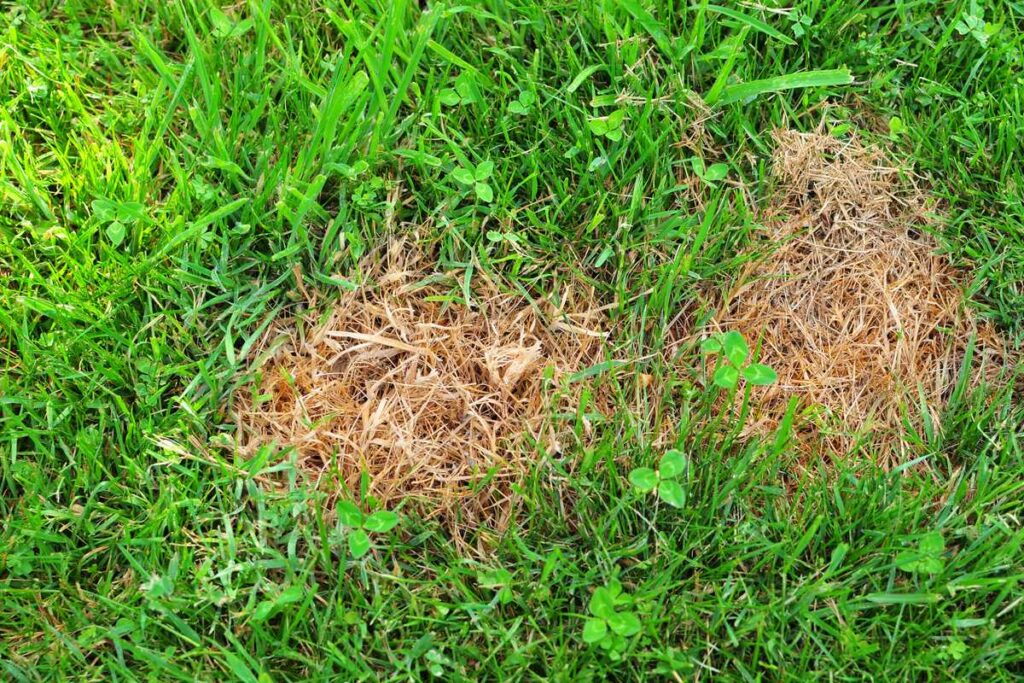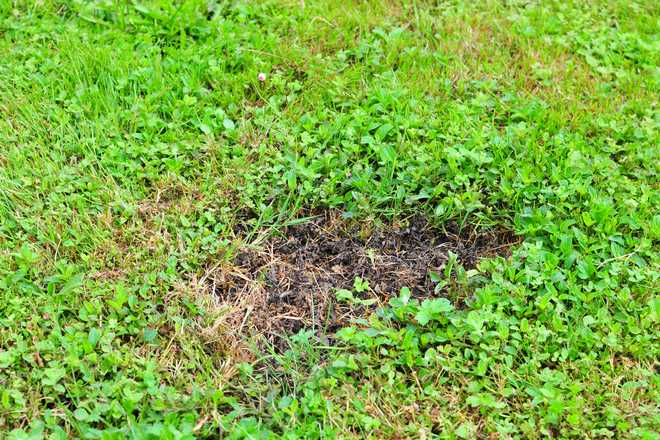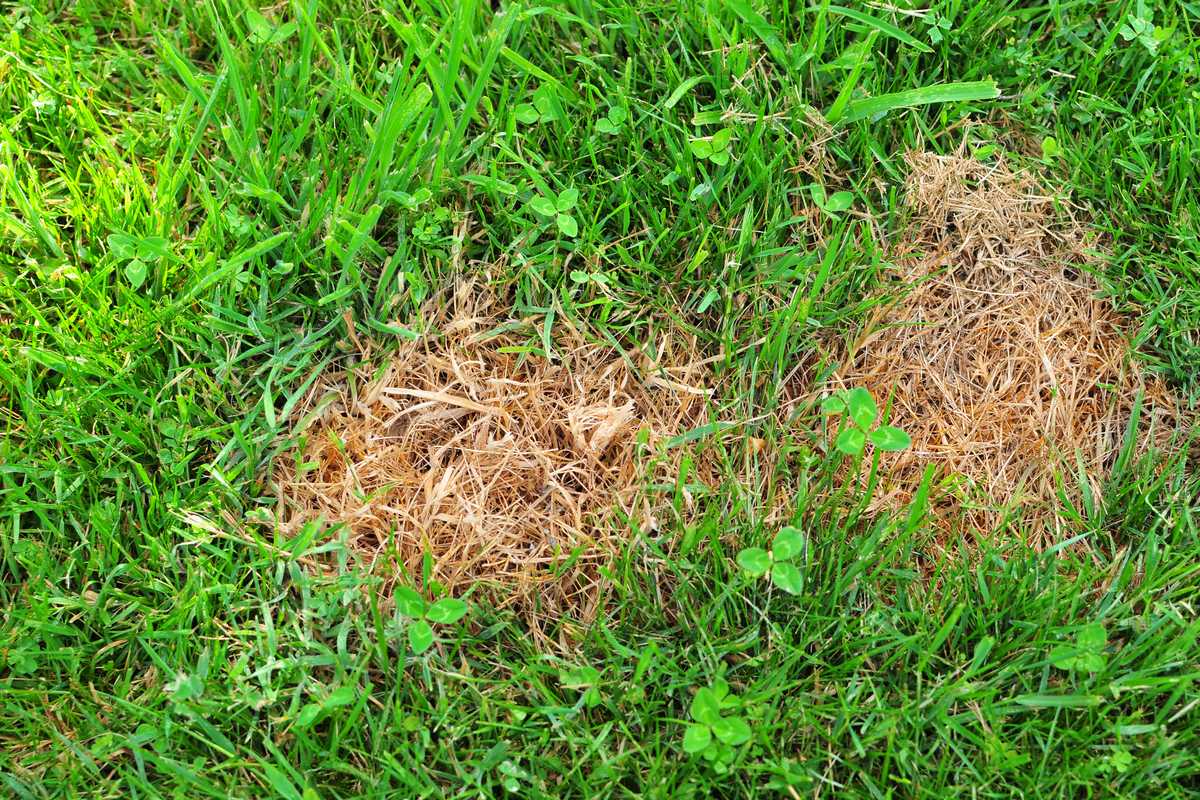
Subject to climatic hazards (periods of drought, floods, heatwaves, etc.), the lawn sees all the colors! With this article, learn how to recognize the main turf diseases and how to react (as appropriate) in a responsible way to keep your turf healthy.
The lawn is overgrown with weeds
Dandelions, daisies, couch grass … Many grasses and perennials take advantage of a sparse lawn to develop. On the one hand, this can be seen as an advantage as these grasses can stay quite green all summer long as the turf suffers from the heat and turns yellow.
Keep in mind that it is impossible to get a perfect lawn! We must therefore accept the presence of these plants. But to slow their progress, mow regularly to tire them out and prevent them from getting reseeded.
The grass is thinning in places
The lawn does not support trampling, especially in wet periods. The grass is injured, the soil compacted and compacted by always passing through the same place. Children’s games, but also your animals (dogs or chickens for example) are often responsible.
Must therefore :
- Temporarily deny them passage to allow time for the lawn to regenerate.
- Also loosen the soil by scratching it, then reseed a relining lawn along with a little potting soil and fine sand. Roll the roll, then water behind.
Whole patches of grass turn yellow
It looks like the grass is withered: it is turning yellow in whole areas. This problem actually stems from a big cutworm: crane fly. They cut the blades of grass at their base which then turn yellow.
When there are a lot of them, the damage can be very severe. Young lawns are more affected, especially in humid areas. To trap crickets, cover the lawn with a tarp. The larvae will come and settle there. It will then be sufficient to harvest them early in the morning to eliminate them.
Brown algae
On very humid and shady soils, brown or black spots can set in. These are algae that eventually suffocate the grass.
Ideally, it is necessary to act on the drainage of the earth (scratching, add sand) and increase the amount of sunlight in the area concerned. Sometimes, for example, it is sufficient to reduce the thick shade provided by the foliage of a tree.

Powdery mildew
In hot, humid weather, leaves of grass that are too shaded become covered with a white powder: this is powdery mildew. When the attacks are severe, the turf can be completely diseased. To fight against this disease caused by fungi, we mainly act in prevention:
- Before sowing the lawn, work the soil by incorporating sand because the disease is favored by poor drainage.
- Then choose a lawn to sow adapted to the climatic conditions and the nature of the soil.
- Finally, avoid adding too nitrogenous fertilizers because they also promote the development of fungal diseases.
The grass is suffocating
It grows little, turns yellow and becomes sparse. On the ground, you can observe a dense felting made up of poorly decomposed grass clippings covering the surface of the ground. This problem occurs especially if you mow often (or exclusively) without collecting clippings or mulching.
Must therefore :
- Run the scarifier in the fall or spring to aerate your lawn.
- And vary the mowing methods: alternate collecting with mulching mowing.
Animal urine
Do you see yellow, round spots in different places on your lawn? The manager is not far away: it’s your dog! His urine, very rich in urea, burns the grass. Especially since the animal, quite routine, is used to always defecating in the same place!
The witch circles
These circles, 25 or 30 cm in diameter, form due to the development of parasitic fungi (wolf vetch, collybie, etc.). They enlarge over time on the lawn. But they also often end up disappearing on their own as they came. So there is nothing to be done.
The foam
Moss grows mostly in the shade of trees, on heavy, moist soil. It is very difficult, if not impossible, to remove and often ends up colonizing everything. However, its progress can be slowed down by adding ash or magnesia to increase the pH of the soil, but also by raising the cutting height of the mower and finally by regularly passing the scarifier.

Moles
These small, carnivorous mammals dig long underground galleries to feed on the insects and worms that live in the soil.
As long as there aren’t many, moles aren’t a problem. You can even salvage lumpy soil from molehills: it is perfect for planting in pots or planters!
As a last resort, only gripper traps are effective. These mole traps aren’t easy to set, but they work amazingly well when they’re rusty and steeped in the smell of earth.

